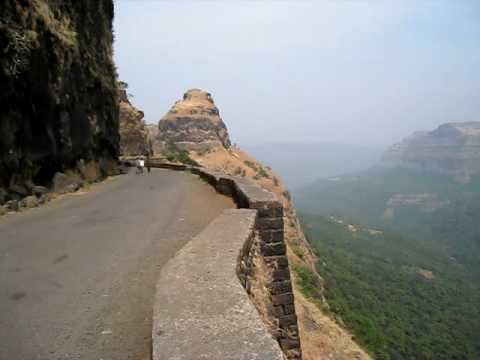Elevation 441 m | ||
 | ||
Similar Western Ghats, Shrivardhan fort, Manaranjan Fort, Kalyan Junction railway st, Lonavala railway station | ||
Bhor Ghat or Bor Ghat, Bhore Ghaut, is a mountain passage located between Palasdari and Khandala in Maharashtra, India along the railway line and between Khopoli and Khandala for road Old Mumbai Pune Road and the Mumbai Pune Expressway. Situated on the crest of the Western Ghat mountain ranges, Bhor Ghat is noted for its scenic and dense woods.
Contents
Map of Bhor Ghat, Tiger Valley, Khandala, Lonavala, Maharashtra 410302
Rail
The Bhor railway ghat cuts a distance of 21 km between Khandala and Palasdari. There are 28 tunnels across the railway ghat. This ghat comes under the proposed Golden Quadrilateral Freight Corridors. During construction of this ghat almost 25,000 workers lost their lives due to steepness of this ghat. Initially steam traction was used to haul trains across this ghat. In 1929-30 the Great Indian Peninsula Railway electrified Bombay (Mumbai) - Poona (Pune) section with use of 1500 Volts DC current. This led to end of steam era on this ghat. The first DC locomotives were EF/1 class locomotives (later classified as WCG1) for freight trains. Later Express trains were hauled by EA/1 class locomotives (later classified as WCP1). The DC era ended on 2nd May 2010 when the ghat was converted to AC power. Currently, dual traction locomotives like WCAM 3 and WCAM 2 and pure AC locomotives like WAM 4, WAP 4, WAP 5 and WAP 7 haul express trains across this ghat while freight trains use WCAG 1, WAG 5, WAG 7 and WAG 9 locomotives. Besides these, even diesel locomotives are used since some trains have to undergo locomotive change at Pune station as the Pune - Kolhapur section is not electrified, however, in August 2016, the Pune - Daund section became electrified.
The rail ghat has some stiff portions which are unable to climb the train with a single locomotive. Hence bank locomotive (bankers) are used. These bankers are attached behind the train at Karjat from Mumbai to Pune and at Lonavala from Pune to Mumbai. Two or three bankers are attached per train depending on train length. In 1929-30 after conversion to electric power the steam bankers were replaced by electric bankers. The ghat was converted from DC to AC power on 2nd May 2010 which lead to end of service WCG2 locomotives which served as bankers on the ghat. They have been replaced by 2 or 3 pairs of WAG-5, WAG-7, WCAM 3 or WCAM 2 locomotives of Kalyan Electric Loco Shed are used as bankers.
There used to be a reversing station on this ghat which trains of Great Indian Peninsula Railway (GIPR) used earlier. This was shutdown due to new tunnels on the ghat. The reversing station was located between Monkey Hill and Khandala after tunnel no. 26. Today a famous point called Amrutanjan point is located here which gives a panoramic view of Khopoli. During night time lights of Khopoli can be seen from here.
Road
The Bhor road ghat cuts the Sahyadri range to join Khandala to Khopoli and handles traffic between Mumbai to Pune on the Old Mumbai Pune Road (Part of NH4 old no. now AH47) and on the Mumbai Pune Expressway (which is a part of Golden Quadrilateral of India). The Amrutanjan bridge is the oldest bridge on this ghat located on old Mumbai Pune road. This is the point where the express way crosses the old road. This ghat stretches almost 18 km between Khandala to Khopoli. There are 4 tunnels on the ghat on the Express Way. There is a point where the Mumbai - Pune Express way reach where there used to be old Great Indian Peninsula Railway (GIPR) reversing station. This point is near the Amrutanjan Bridge which is crossing point of the Mumbai - Pune Express way and Asian Highway 47 (AH47) from Gwalior to Bangalore. Landslides often occur during heavy monsoon leading to disturbance in Mumbai - Pune traffic due to road blocks. The government authorities are planning steps to prevent such blocks as Mumbai - Pune section is one of the busiest traffic section in India.
History
The discovery of a route to make a motorable pass in Bor Ghat came after information was provided by a local Dhangar tribesman called Shigroba. Later, the Great Indian Peninsula Railway laid a railway line from Mumbai to Pune. The section through Bhor Ghat with 28 tunnels, and old bridges was opened in 1863. The Ghat opened Mumbai to the Deccan plains of Peninsular India.
